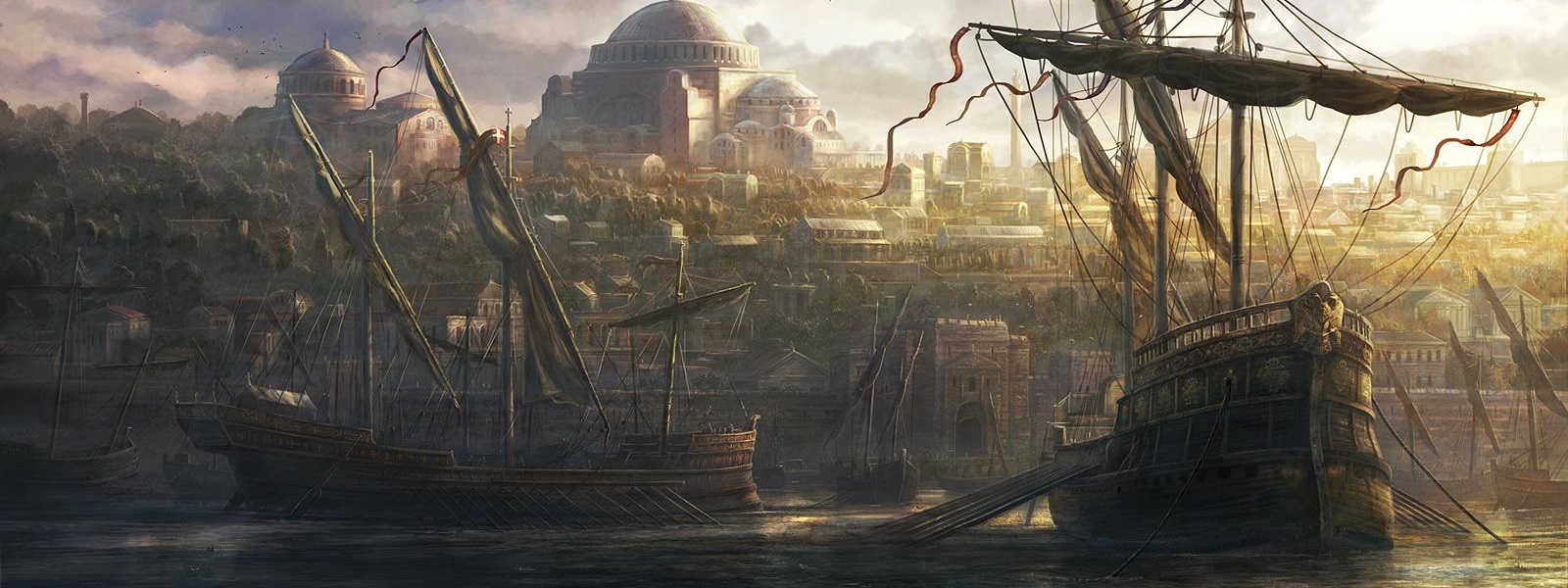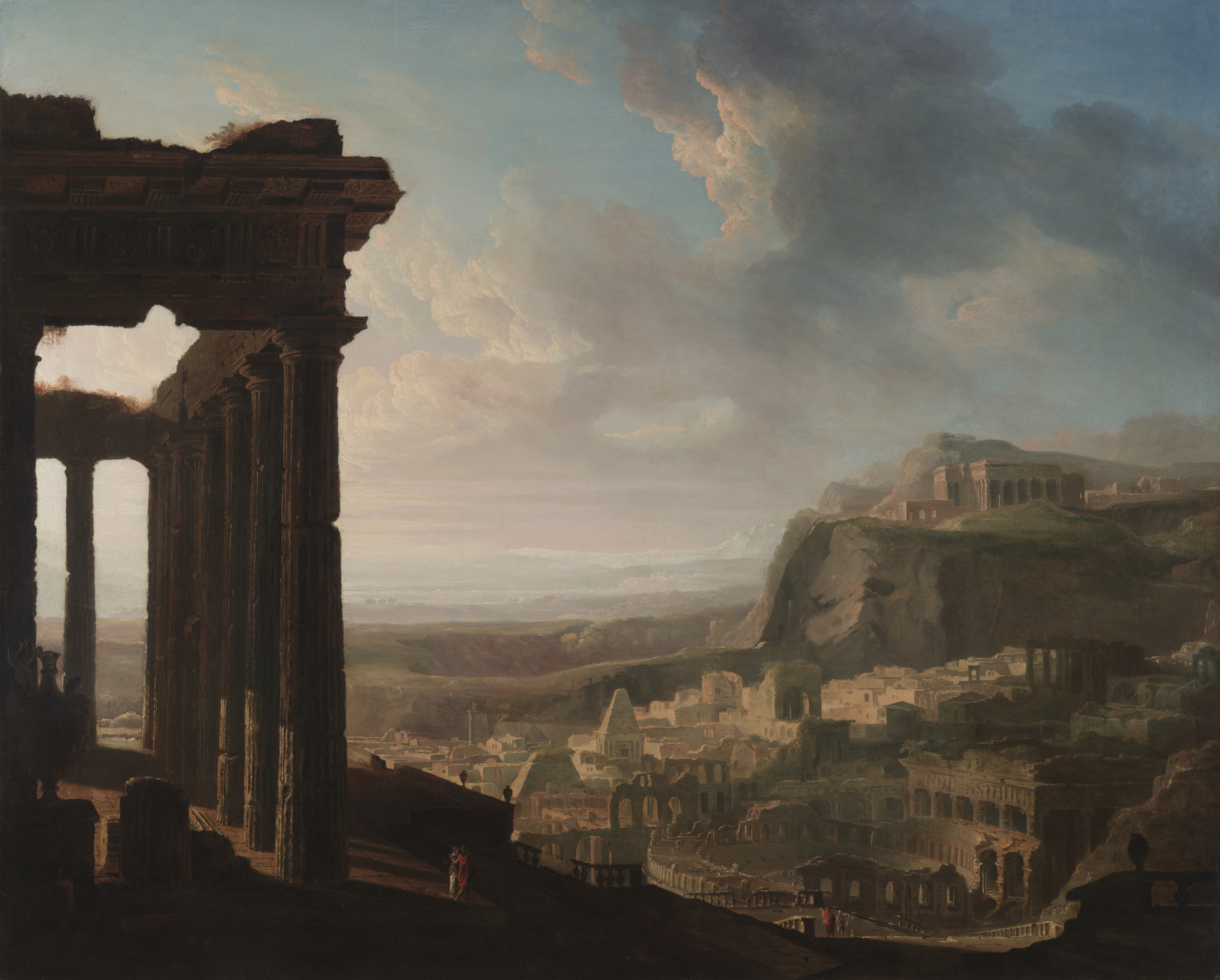Syros (/ sairos /)
Ψιροσ
As you enter Syros you can see with your own eyes the age of the city. Several ruins dominate the skyline, and one can hear the furious restoration effort of many of these ancient buildings, and the deconstruction of others. Tent cities sprawl around the ancient buildings as newly escaped slaves and the rest of the dispossessed seek to carve out a new life.The city of Syros, established a dozen or so kilometers away from the River Ilos is a city with an ancient history, and in particular, an extensive history of being nearly destroyed, yet arising from the ashes to be restored to some level of prominence. Most recently restored, as the capital of the newly founded Syroi League, Syros has slowly been reconstructed in the past few centuries.
The Wards of Syros
There are 6 major wards in Syros, these wards are generally built in and around old ruined, and partially restored buildings. The most restored sections are those closest to the core, and the city watch, and these are also incidentally the most prosperous.Old Town: The Old Town, built up around the ancient agora, and the city's green, is the wealthiest of Syros' Districts. The city's mercantile class and its markets are based here.
The Restoration: Established around a series of ancient temples, the Restoration is the current primary focus of the city's council. Some money and effort have been poured into the area, but the heavily damaged nature of the ruins in the area and the relative lack of resources have made efforts difficult.
Woolen Ward: Home of nascent industry in Syros, the Woolen Ward is where many of the city's textile craftspeople can be found, taking raw wool and fur from the local livestock and making cloth for sale on the city's markets.
Farming Ward: The Farming Ward, located in the city's southern district is home to most of the city's farmers. The people here live and work together to produce better harvests to feed the city.
Plainsreach: Plainsreach facing the interior of the League, is one of the more newly resettled districts, with most of the people living here either farmers or journeymen in the textile industry.
Riverreach: Located on the side of the city closest to the Ilos River which is roughly a dozen or kilometers away, Riverreach is also the home to farmers, and the poorer members of the merchant class, as well as those working on projects in the restoration.
Important Locations
The Green: The city's green, established at the former site of the polis' palace, has become the center of civic life in modern Syros. The Green is often where the council delivers deliberations to the general populace, where the militia meets to train, and where most festivals are based.The Agora: The city's marketplace, the Agora is one of the longest-lasting and most enduring symbols of Syroi Life. Though Syros' markets don't have the same variety and volume of goods as larger, more prosperous cities, it is nonetheless respectable.
The Temple of Sion: Set up in the northwest corner of the Plainsreach, the Temple of Sion, dedicated to the God of Broken Chains, the largest such temple to exist in the world. It is also one of the few fully constructed temples in the city.
Demographics
The city of Syros is relatively small for a capital city, with a population of 12,150. Thanks in large part to Syros' very broad citizenship laws, virtually the entire adult population of the city is considered part of the citizen body. The population consists primarily of Ilosi Aeillans with a broad melting pot culture and large populations of nonhuman liberated slaves.
Government
The city of Syros has two parallel government structures. As the capital of the Syroi League, the sortition council makes many of the high level laws that effect the city and the wider league. The day to day operations are however managed by the city's ruling council, which is largely responsible for managing the civil service. Major legal changes are done through the council as well, though they are voted on by the citizen body which meets on the green when called.
Defences
The city of Syros has two parallel government structures. As the capital of the Syroi League, the sortition council makes many of the high-level laws that affect the city and the wider league. The day-to-day operations are however managed by the city's ruling council, which is largely responsible for managing the civil service. Major legal changes are done through the council as well, though they are voted on by the citizen body which meets on the green when called.
Industry & Trade
The city of Syros is home to a small, but slowly growing textile industry, in large part due to the wide availability of animal furs and wools in close proximity to the city itself. Aside from this industry, there are some skilled tradespeople, but not Syros is not noteworthy in that respect. The Agora of Syros is a serviceable local trade hub taking in products from the local area, and selling them to traveling merchants.
Infrastructure
The city of Syros has little in the way of infrastructure, with previous construction, now in ruins making this more of a challenge than it otherwise would be. There are a number of roads that run into Syros, both of the larger, Imperial variety, and smaller local roads used by the populace to conduct local trade, or smuggle liberated slaves throughout the League. Water is provided by wells or carried by wagon train from the river in certain rare circumstances, there is no operational sewage system to speak of.
Guilds and Factions
Syros is relatively free of factionalism, with the most influential citizens and political blocks forming around the skilled trades. To the extent that such factional conflict does exist, it exists with the primarily cordial competition for influence between the weavers and the merchant guilds who represent the interests of industry, and the interests of both other skilled trades, and the city's population of mostly transient merchants.
History
The city of Syros' initial roots lies in one of the northernmost outposts of the Yulan-Tai expansion. Ancient archaeological evidence indicates that the unnamed Yulan-Tai predecessor to the modern city was never particularly large, and served largely as a centralized military station more than it ever did a civilian settlement. This Yulan-Tai outpost was destroyed by the Cyrenic dwarves during their resurgence shortly after the conclusion of the War of Frozen scales.
The area was resettled by the Ilosi peoples as the city of Armenicos during the early Forging Era, quickly establishing itself as an important and influential city before becoming one of the major founding members of the Ilosi Republic. In the latter days of the Republic, it was destroyed by a major earthquake and did not recover until well into the High Imperial. The city Armenicos would eventually re-establish itself but never managed to fully reclaim its former glory, with the incoming strife of the Late Imperial tampering economic growth. It would be destroyed again during the Feloran Invasion when the Felorans sacked the city after a brutal siege.
The city of Armenicos would rebuild slowly during the Reforging Era, but it would suffer greatly in the first two Reunification Wars until a peasant's movement would seize control of what had essentially been reduced to a small town at the end of the Second Reunification War. Over the past few centuries, Aremnicos renamed Syros (after the peasant movement's patron deity) would slowly be rebuilt, with some of the more central sections being reconstructed from ruins.
Geography
The city of Syros is situated close to, but not banking on, the River Syros in the valley of a series of small hills. It is surrounded by relatively fertile soil, and its western outskirts in particular are filled with major farmlands. The hills are largely the site of most of the city's larger ruins, as ages past had placed a stronger emphasis on building religious buildings on hilltops. However, as Syros expands from its core, these ruins will likely be reconstructed or subsumed by the expanding city.
Founding Date
EY 115
Alternative Name(s)
Armenicos
Type
City
Population
12,150
Inhabitant Demonym
Syroi
Location under
Owning Organization




